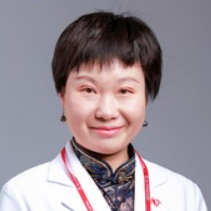Personalized Medicine for Infertility
A special issue of Journal of Personalized Medicine (ISSN 2075-4426). This special issue belongs to the section "Personalized Therapy and Drug Delivery".
Deadline for manuscript submissions: closed (1 October 2023) | Viewed by 9245
Special Issue Editor
Special Issue Information
Dear Colleagues,
Infertility, defined as failure to conceive after 12 months or more of regular, unprotected sexual intercourse, affects approximately 15% of couples worldwide and deprives them of their choice to have a child. Infertility is supposed to become the third most common disease in the 21st century after cancer and cardiovascular and cerebrovascular diseases. Generally, infertility may be caused by abnormalities of the ovaries, fallopian tubes, uterus, the endocrine system, and male semen. Considering its multifactorial etiology, precise treatment for infertility takes into account people’s individual variations and minimizes adverse effects and medical resources waste. In-depth studies of the pathological factors and molecular mechanisms of infertility provide new ideas and methods for the disorder's prevention, diagnosis, and treatment.
This Special Issue of the Journal of Personalized Medicine aims to highlight recent developments, from basic science to therapeutic strategy, in personalized medicine for infertility. Articles on the investigation of novel etiology, disease biomarkers, and novel opportunities for personalized therapy of infertility are welcome.
Dr. Ling Wang
Guest Editor
Manuscript Submission Information
Manuscripts should be submitted online at www.mdpi.com by registering and logging in to this website. Once you are registered, click here to go to the submission form. Manuscripts can be submitted until the deadline. All submissions that pass pre-check are peer-reviewed. Accepted papers will be published continuously in the journal (as soon as accepted) and will be listed together on the special issue website. Research articles, review articles as well as short communications are invited. For planned papers, a title and short abstract (about 100 words) can be sent to the Editorial Office for announcement on this website.
Submitted manuscripts should not have been published previously, nor be under consideration for publication elsewhere (except conference proceedings papers). All manuscripts are thoroughly refereed through a single-blind peer-review process. A guide for authors and other relevant information for submission of manuscripts is available on the Instructions for Authors page. Journal of Personalized Medicine is an international peer-reviewed open access monthly journal published by MDPI.
Please visit the Instructions for Authors page before submitting a manuscript. The Article Processing Charge (APC) for publication in this open access journal is 2600 CHF (Swiss Francs). Submitted papers should be well formatted and use good English. Authors may use MDPI's English editing service prior to publication or during author revisions.
Keywords
- infertility
- mechanism
- ovary
- fallopian tube
- uterus
- male factor
- assisted reproductive technology
- personalized treatment






